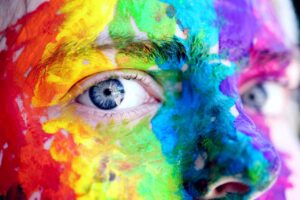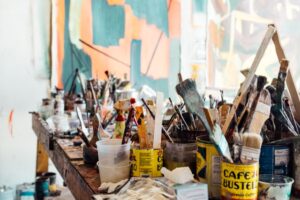Art and Technology: Finding Balance in the Digital Age
The digital age has revolutionised almost every aspect of our lives, and the world of art is no exception. From virtual galleries to AI-generated masterpieces, technology has opened doors to unprecedented creative possibilities. Yet, with this innovation comes a question: how do we balance the timeless essence of art with the relentless march of technology? In this article, we delve into the evolving relationship between art and technology, exploring the benefits, challenges, and strategies for finding equilibrium in this dynamic era.
The Rise of Digital Art
Technology has transformed art in ways that were unimaginable just a few decades ago. Digital tools have expanded the horizons for creators, enabling them to explore new mediums, techniques, and platforms.
Benefits of Technology in Art
- Expanded Accessibility: Digital platforms allow artists to share their work with global audiences instantly, breaking geographical and cultural barriers.
- Innovative Tools: Programs like Adobe Creative Suite, Procreate, and Blender provide artists with tools to experiment with forms and styles that were once impossible.
- Democratisation of Art: Online platforms and marketplaces make it easier for emerging artists to showcase and sell their work without traditional gatekeepers.
- Interactivity: Technology enables the creation of interactive and immersive experiences, such as virtual reality (VR) exhibits and augmented reality (AR) installations.
Challenges of Digitalisation
However, the integration of technology into art is not without its difficulties. The rapid pace of innovation can sometimes overshadow the intrinsic value of traditional art forms. Over-reliance on digital tools may also lead to a loss of manual skills and a disconnect from the tactile aspects of creation.
Finding Balance: Blending Tradition and Innovation
As technology reshapes the art world, finding a harmonious balance between tradition and innovation becomes essential. Here are some strategies for navigating this intersection:
- Preserving Traditional Techniques: While embracing digital tools, many artists are committed to preserving traditional methods, such as painting, sculpting, and printmaking. These techniques often provide a tactile and emotional connection that digital tools cannot replicate.
- Integrating Technology Thoughtfully: Instead of replacing traditional practices, technology can enhance them. For example, 3D printing can bring intricate hand-drawn designs to life, and AR can add layers of interaction to physical paintings.
- Fostering Digital Literacy: Understanding how to use digital tools effectively is vital. Artists should seek to master both traditional and technological skills, ensuring they can navigate both realms with confidence.
In this context, the concept of balance extends beyond art. Just as artists combine traditional methods with technology, individuals explore similar harmony in other areas, such as games. For instance, the classic game of roulette remains popular even in its digital form. For more information about this fusion, visit https://play-fortune.pl/gry-online/ruletka/.
The Future of Art in the Digital Landscape

As technology continues to evolve, its impact on art will only grow. Emerging trends like blockchain and NFTs (non-fungible tokens) are reshaping how art is valued, bought, and sold. Meanwhile, AI tools like DALL-E and MidJourney are blurring the lines between human and machine creativity.
Opportunities Ahead
- New Revenue Streams: Artists can monetise their work in innovative ways, from selling digital art as NFTs to offering virtual workshops.
- Collaborative Projects: Technology fosters collaboration across disciplines, allowing artists, programmers, and engineers to create groundbreaking projects together.
- Sustainability: Digital art can reduce the environmental impact associated with traditional art materials and exhibitions.
Ethical Considerations
With these advancements come ethical concerns. Questions about authorship, ownership, and the authenticity of digital art challenge conventional notions of creativity. Artists must navigate these issues carefully to ensure that their work retains its integrity.
Embracing Both Worlds
To thrive in this evolving landscape, artists must embrace both the possibilities of technology and the timeless beauty of traditional methods. By doing so, they can create work that resonates across generations, bridging the gap between past and future.
Interestingly, this balance mirrors other aspects of modern life, where digital innovation blends with timeless practices. For those intrigued by games that integrate tradition and technology, you can explore more about various online games at https://play-fortune.pl/gry-hazardowe/.
Conclusion
Art and technology are not adversaries; they are collaborators in the creative journey. While technology offers artists new tools and platforms, the heart of art remains unchanged: to connect, inspire, and express. By finding balance, artists can navigate the digital age with confidence, ensuring their work remains meaningful in a rapidly changing world.

